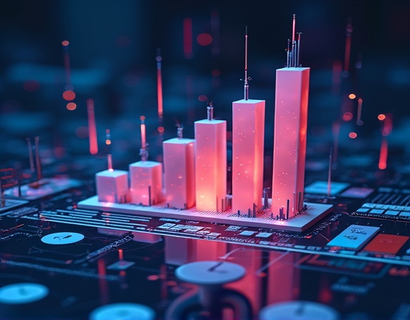Revolutionizing Aerospace: Cutting-Edge Innovations for Enhanced Efficiency and Safety in Aviation and Space Exploration
The aerospace industry stands at the forefront of technological innovation, driven by the relentless pursuit of efficiency, safety, and performance. Recent advancements have transformed the landscape of aviation and space exploration, offering unprecedented opportunities for growth and discovery. This article delves into the latest technological breakthroughs that are reshaping the future of aerospace engineering, providing industry professionals and visionaries with a forward-looking perspective.
One of the most significant areas of innovation is in materials science. The development of advanced composites and lightweight alloys has revolutionized aircraft design. These materials offer superior strength-to-weight ratios, reducing the overall weight of aircraft and thereby improving fuel efficiency. For instance, the use of carbon fiber reinforced polymers (CFRP) has become widespread in both commercial and military aircraft. CFRP not only reduces weight but also enhances structural integrity, allowing for the design of more aerodynamic shapes that minimize drag.
Another critical area is the integration of advanced avionics and flight control systems. Modern aircraft are equipped with fly-by-wire systems that replace traditional mechanical controls with electronic signals. This shift has led to more precise and responsive flight control, reducing pilot workload and enhancing safety. Additionally, the incorporation of artificial intelligence (AI) and machine learning algorithms into avionics systems enables predictive maintenance and real-time decision support, further improving operational efficiency.
In the realm of propulsion, the aerospace industry is witnessing a paradigm shift towards more sustainable and efficient engines. Electric and hybrid-electric propulsion systems are gaining traction, particularly in the development of unmanned aerial vehicles (UAVs) and small commercial aircraft. These systems offer significant reductions in noise and emissions, aligning with global environmental goals. For larger aircraft, researchers are exploring advanced turbine technologies and alternative fuels, such as hydrogen, to reduce carbon footprints and enhance performance.
Space exploration has also seen remarkable advancements, driven by private sector innovation and international collaboration. Reusable rocket technology, pioneered by companies like SpaceX, has dramatically reduced the cost of access to space. The ability to land and reuse rocket boosters has made space missions more economically viable, paving the way for more frequent and ambitious space endeavors. Reusable satellites and modular space stations are other areas where innovation is leading to cost savings and increased flexibility.
Robotics and autonomous systems play a crucial role in both aviation and space exploration. In aviation, autonomous drones are being used for a variety of applications, from surveillance and delivery to inspection and maintenance. These drones are equipped with sophisticated sensors and AI algorithms that enable them to navigate complex environments and perform tasks with high precision. In space, robotic arms and autonomous rovers are essential for conducting experiments and maintaining infrastructure on spacecraft and planetary surfaces.
The integration of Internet of Things (IoT) technology is another transformative force in aerospace. Connected systems allow for real-time monitoring and data analysis, enhancing both safety and efficiency. For example, sensors embedded in aircraft components can continuously monitor performance and predict potential failures, enabling proactive maintenance and reducing downtime. In space missions, IoT enables the collection and transmission of vast amounts of data from various instruments and systems, facilitating better decision-making and operational oversight.
Environmental considerations are increasingly influencing aerospace design and operations. The industry is focusing on reducing noise pollution and minimizing the environmental impact of aviation and space activities. Quieter engine designs and optimized flight paths are being developed to lessen the disturbance to communities near airports. In space, efforts are underway to develop sustainable practices, such as in-orbit debris removal and the use of eco-friendly propellants, to preserve the space environment for future generations.
Advanced simulation and modeling tools are revolutionizing the design and testing phases of aerospace projects. Computational fluid dynamics (CFD) and finite element analysis (FEA) allow engineers to simulate and analyze complex phenomena with high accuracy. This reduces the need for physical prototypes, saving time and resources. Virtual reality (VR) and augmented reality (AR) technologies are also being employed to enhance training and design visualization, providing immersive experiences that improve understanding and collaboration.
Cybersecurity is an emerging concern in the aerospace sector, given the increasing reliance on connected systems and data exchange. As aircraft and spacecraft become more interconnected, the risk of cyber threats grows. To address this, the industry is adopting robust cybersecurity measures, including encryption, intrusion detection systems, and regular security audits. Ensuring the integrity and security of aerospace systems is crucial for maintaining safety and operational reliability.
The future of aerospace engineering is also shaped by international collaboration and regulatory frameworks. Global standards and regulations, such as those set by the International Civil Aviation Organization (ICAO) and the Federal Aviation Administration (FAA), play a vital role in ensuring safety and interoperability. Collaborative research initiatives and partnerships between governments, academia, and industry are fostering innovation and accelerating the development of new technologies.
In conclusion, the aerospace industry is at a pivotal moment, driven by a convergence of technological advancements in materials, avionics, propulsion, robotics, IoT, and sustainability. These innovations are not only enhancing efficiency and safety but also opening new frontiers in aviation and space exploration. As the industry continues to evolve, the potential for further breakthroughs remains vast, promising a future where the skies and cosmos are explored and utilized with unprecedented ease and security.




